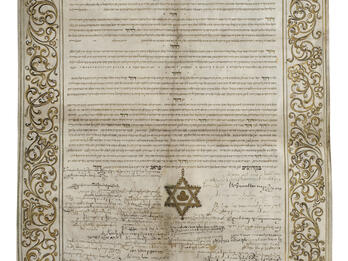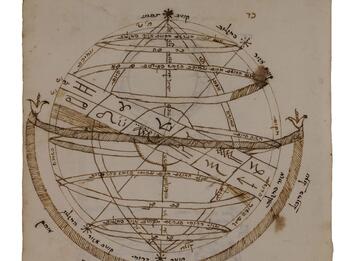Commentary: On Pirke Avot
Moses received the Torah from Sinai and transmitted it to Joshua; Joshua to the elders; the elders to the prophets; and the prophets transmitted it to the men of the Great Assembly. They said three things: Be deliberate in judgment, raise up many disciples, and make a fence around the Torah [m. Avot 1:1].
“Moses received the Torah from Sinai”:
I maintain that since this tractate is not structured around any of the commandments of the Torah—as are the other tractates comprising the Mishnah—but consists entirely of ethical teachings inculcating worthy traits of character, and the gentile sages have likewise composed works of their own invention on ethical themes as to how one should behave toward one’s fellow, it was on that account that the author of this Mishnah commenced this tractate with the phrase: “Moses received the Torah from Sinai,” to inform us that the ethical teachings contained in this tractate were not invented by the mishnaic sages, but were also proclaimed at Sinai.
“From Sinai”:
From the One Who was revealed at Sinai.
“To the elders”:
who outlived Joshua, and those elders [transmitted the Torah] to other elders until the era of the first Prophets: Eli the Priest, and Samuel the Ramathite. . . .
“To the men of the Great Assembly”:
They were one hundred and twenty elders: Zerubabel, Seraiah, Ra’aliah, and Mordechai Bilshan [see Ezra 2:2; b. Megillah 16b], who lived in the days of Ezra, when they ascended [to the land of Israel] from the exile in the Second Temple era; and included among them were ḥaggai, Zechariah, Malachi, Neḥemiah ben Hacaliah, and their colleagues. And they were called “the Great Assembly” because they restored the divine crown to its pristine glory [b. Yoma 69b]. For Moses had proclaimed: The great, the mighty and awesome God (Deuteronomy 10:17) [when depicting the Almighty]: then along came Jeremiah and Daniel, who did not say “mighty” and “awesome,” but these [elders] restored them as at first, for they said: “Assuredly these are His mighty deeds, assuredly these are His awesome deeds!”—for without such deeds as wrought by God, how could a nation such as this [i.e., Israel] continue to survive among so many [hostile] nations?
“They said three things”:
They made numerous statements, but it was through these three utterances of theirs that the Torah was preserved.
“Be deliberate in judgment”:
If a lawsuit comes before you once, and again and then a third time, you should not say, “this case has already come before me, and I have dealt with it on two, nay three occasions”; but rather, be deliberate, i.e., delay somewhat before pronouncing judgment.
“And raise up many disciples”:
This is in contradistinction to the view of R. Gamaliel, who declared: “Any disciple whose inward character does not match his external mien should not enter the study house” [b. Berakhot 28a]. Rather, we teach Torah to every individual and there is no need to make inquiries about him, provided that it is not clear that his deeds are foul and his reputation unsavory. Alternatively, this means [b. Yevamot 62b] that even though one has raised up disciples in one’s youth, one should do so likewise in old age, as it is written: Sow your seed in the morning, and withhold not your hand in the evening! (Ecclesiastes 11:6).
“And erect a fence around the Torah”:
A fence, so as to avoid infringing upon a Torah-based prohibition, such as the secondary categories of incestuous relationships and acts forbidden by the rabbis on the Sabbath [because they are out of harmony with the day’s sacred character], in accordance with the biblical admonition: And you shall keep My charge (Leviticus 18:30), [which the rabbis interpret]: create a safeguard to enable you to observe My charge! [b. Megillah 5a].
Translated by
.
Credits
Ovadiah of Bartenura,“Commentary: On Pirke Avot (Hebrew)” in Mishnayot mi-Seder Nezikin by Obadiah Bertinoro (Venice: Bi-vet Mesir karlo kvirini , 1548), 61a-62b (?).
Published in: The Posen Library of Jewish Culture and Civilization, vol. 5.




